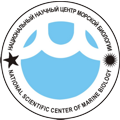 |
Laboratory of Cell Differentiation
Scientific Head: E.V. Pushchina, Prof., Dr. Sci. Biol..
Main fields of research:
- Study of the cellular/molecular composition of the meiosis-inducing substance in order to develop approaches to its use for artificial gamete differentiation and false-meiosis differentiation of tumor cells.
- Study of induced destruction of tumor cells in order to identify the triggering mechanism of their programmed death.
- Study of reparative mechanisms of the nervous system in bony fish after injury.
- A combined use of structural features of gamete differentiation and genetic markers to identify geographical affiliation of commercially valuable species that constitute the marine biological resource of the Russian Far East and other regions of the World Ocean.
Major results of research:
- We have found that during the period of cells’ transition from mitosis to meiosis the structures of the so-called germ plasm are transformed. It is the transformation that leads to the meiotic remodeling of nucleus. Apparently, there exists a commonly distributed pattern of meiotic differentiation in nature, which involves germ plasm structures that are formed and undergo functional transformation with the morphological involvement of mitochondria and the coordinated expression of nuclear and mitochondrial genes.
- Based on a system of morphological methods, we have established that cucumarioside A2-2, a triterpene glycoside isolated from the Far Eastern holothurian Cucumaria japonica (developed at the G.B. Elyakov Pacific Institute of Bioorganic Chemistry), besides apoptosis and necrosis, activates also type III cell death, referred to as apoptotic necrosis, in a culture of Ehrlich ascites carcinoma (EAC) cells.
- We have also found that the primary destructive change that occurs in experimental tumor cells exposed to cucumarioside A2-2 is the emergence of small-sized lytic zones in cytoplasm of EAC tumor cells as a result of activation of kalpain, a nonlysosomal protease. The following stage, being the process of destruction of cell organelles, is determined by the joint of calpain and caspase-1 activity. Moreover, we have revealed that calpain/caspase-1 clusters can be localized in microvilli of EAC cells, as well as in microapocrine vesicles budding from tips of microvilli. Thus, the triggering role of calpain in the activation of calpain/caspase-1 signaling pathway involved in cell death has been found.
- We have established that the morphology of sperm cells is a measurable character that can not only identify a species at the level of cytology, but also indicate its geographical affiliation. Thus, we have shown that in bivalve species, whose genetic stability was proven by analysis of genetic markers such as CO1, the morphology of male gametes is often variable. We have found that morphologically different forms of sperms can dominate geographically remote populations of the species. A specific pattern of sperm is often characteristic of certain geographical range. We believe that the geographical origin of a mollusk can be identified based on the morphology of its dominant sperm.
- We have studied the stages of cellular and humoral responses of the nervous and immune systems in juvenile salmon in case of traumatic damage. After a mechanical injury, the number of cells expressing glial fibrillar acidic protein and vimentin increases, and neurogenic niches with heterogeneous cellular composition and radial glia fibers appear in the dorsal zone of the telencephalon in juvenile Pacific salmon. Large numbers of young neurons are formed in the periventricular zone de novo, and migrating cells are formed in parenchymal layers. NO and H2S gas transmitters are shown to be involved in neuroprotective and proliferative processes during regeneration.
- We have found that after a combined mechanical injury to eye and optic nerve head in the trout Oncorhynchus mykiss, the proliferation and neurogenesis in the proliferative zones of the cerebellum and optic tectum significantly increase. In the cerebellum, a significant increase in the proliferative activity of cells in the dorsal proliferative zone and parenchymal cells in the molecular and granular layers is recorded. The neuronal proliferation and differentiation occur in the subventricular zones of the telencephalon, optic tectum, cerebellum, and medulla oblongata.
- We have quantified the expression of nitric oxide synthases and the Pax6 transcription factor in the adult trout brain under normal conditions and after an eye injury. To study the properties of brain cells cultivated in vitro, a primary culture of trout brain cells was obtained. As the results of the study on the primary culture of trout brain cells show, the cell proliferation and differentiation increase in various parts of the brain after the eye injury. Radial glia cells expressing nitric oxide and Pax6 are detected in the tectum, an optic projection center of the brain, which indicates a high neurogenic activity of this brain region.
- We have studied the proliferation and glycogenesis processes after a mechanical injury to the cerebellum in juvenile Pacific salmon. In the dorsal, lateral, and basal zones of the molecular layer of the cerebellum after the traumatic injury, neurogenic niches containing cells expressing glial fibrillar acidic protein and radial glia fibers are identified. Due to the injury, the dorsal matrix zone also undergoes structural rearrangement associated with the spatial reorientation of radial glia fibers and the formation of specific structures for the migration of cells formed in this zone towards the site of brain damage.
- In the juvenile Pacific salmon telencephalon, we have identified a superficially located periventricular proliferative zone with elements expressing the nuclear antigen of proliferating cells corresponding to the pallial periventricular zone of other fishes. After a mechanical injury, zones of induced neurogenesis emerge also in the telencephalon of masu salmon: neurogenic niches and zones of secondary neurogenesis surrounded by radial glia fibers, which indicates a high level of both persistent and reparative neurogenesis in the telencephalon of Pacific salmon.
Information provided by the researcher E.A. Pimenova.
| Contacts: |
|
Palchevskogo str. 17 |
|
Vladivostok, Russia, 690041 |
|
Phone: +7 (423) 2310905 |
|
Fax: +7 (423) 2310900 |

